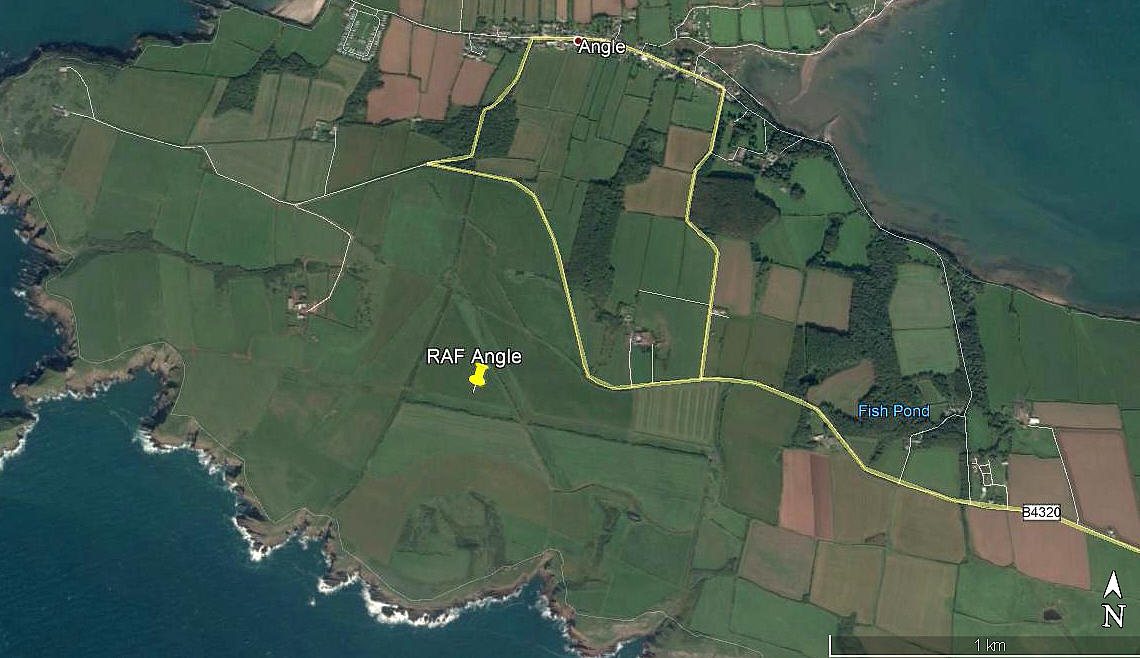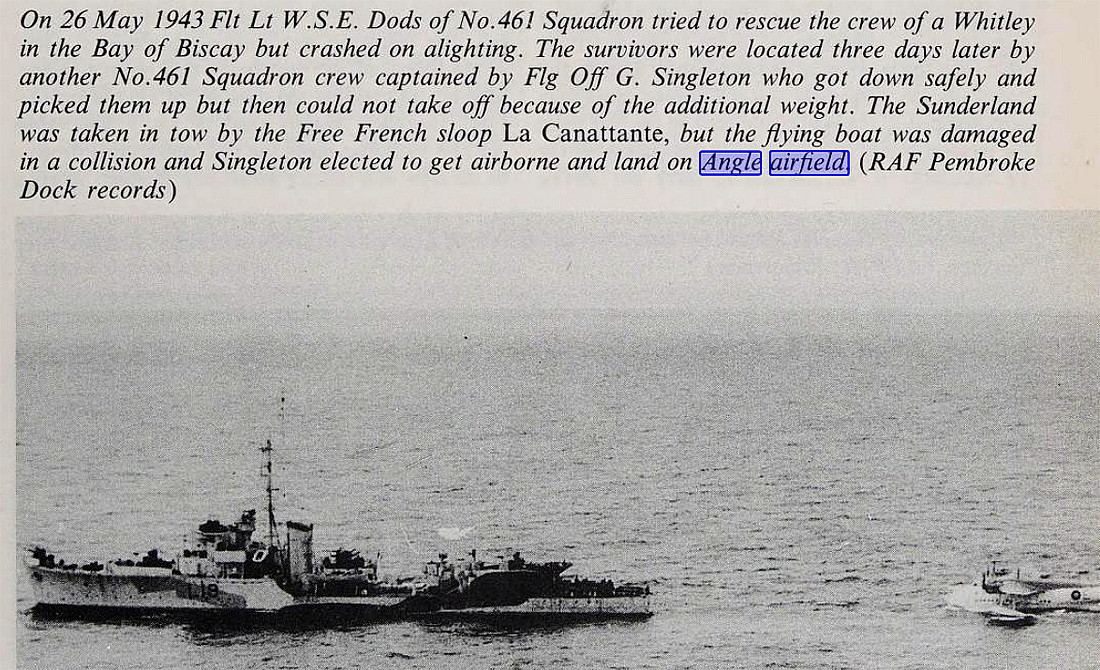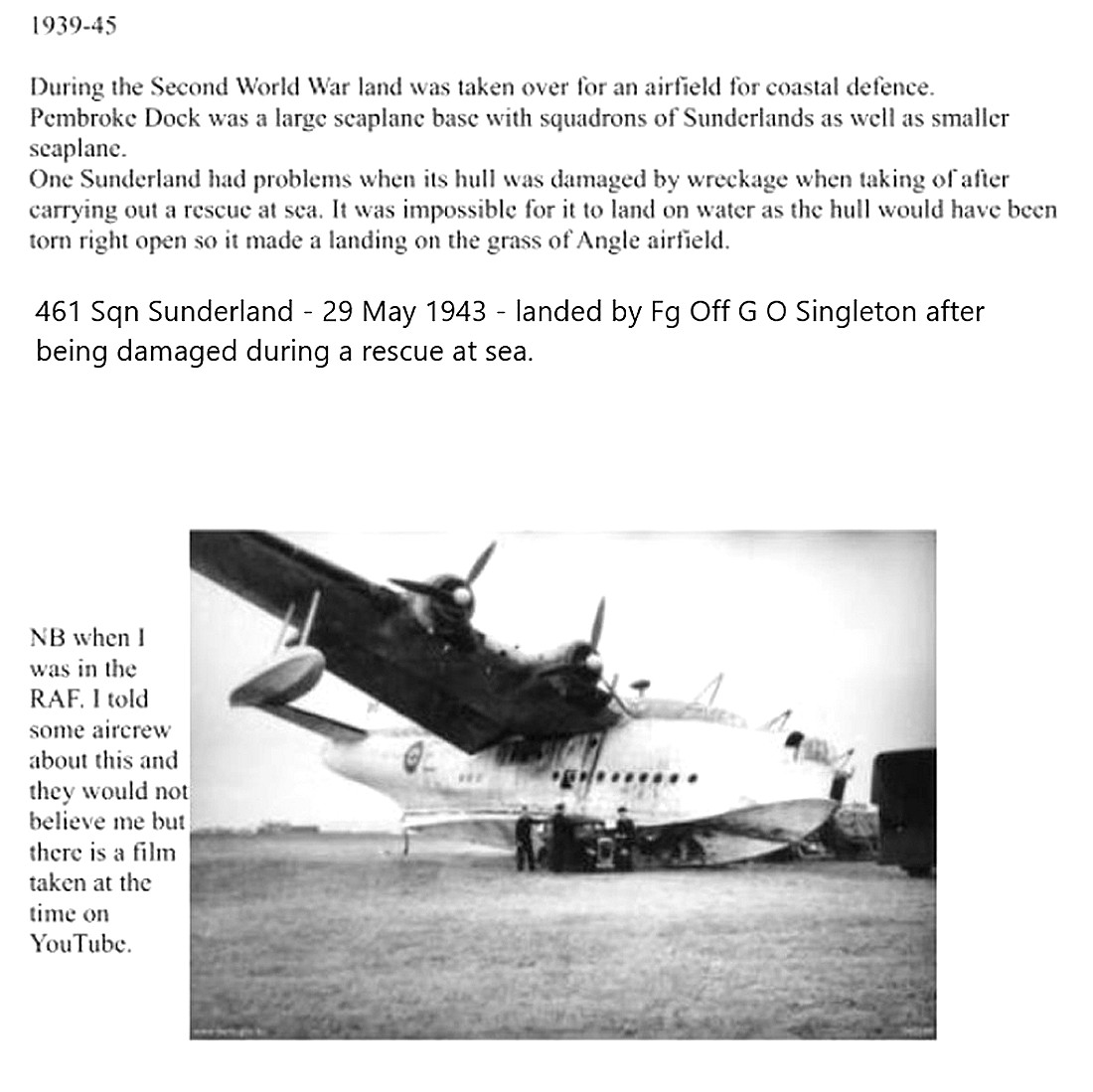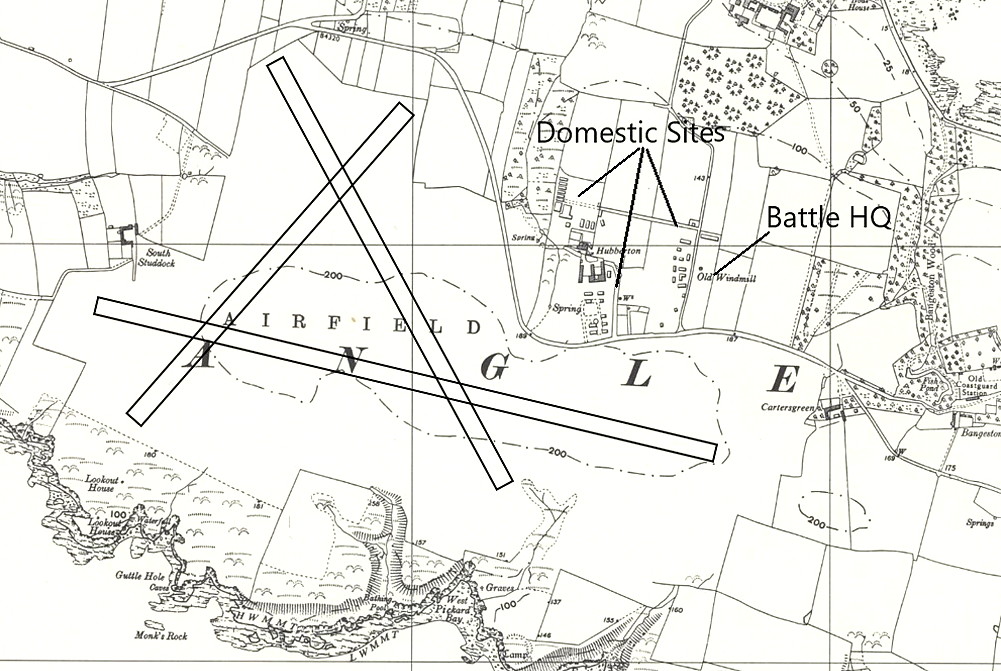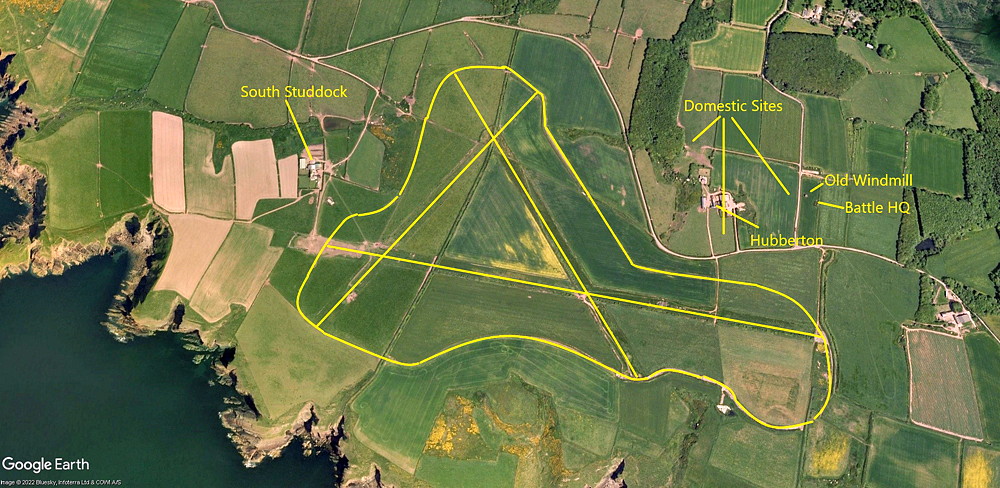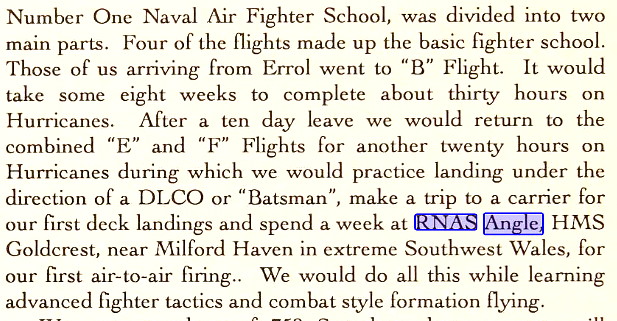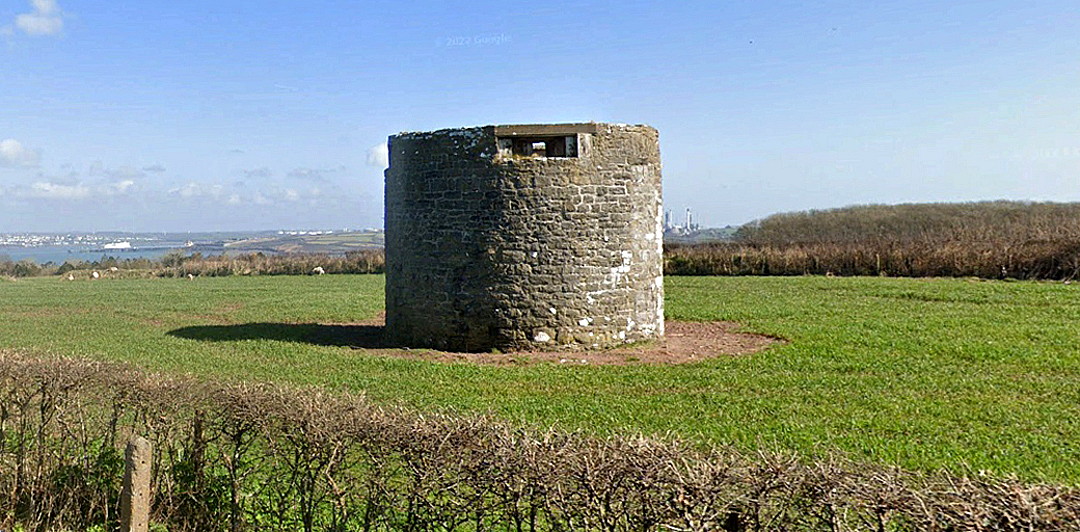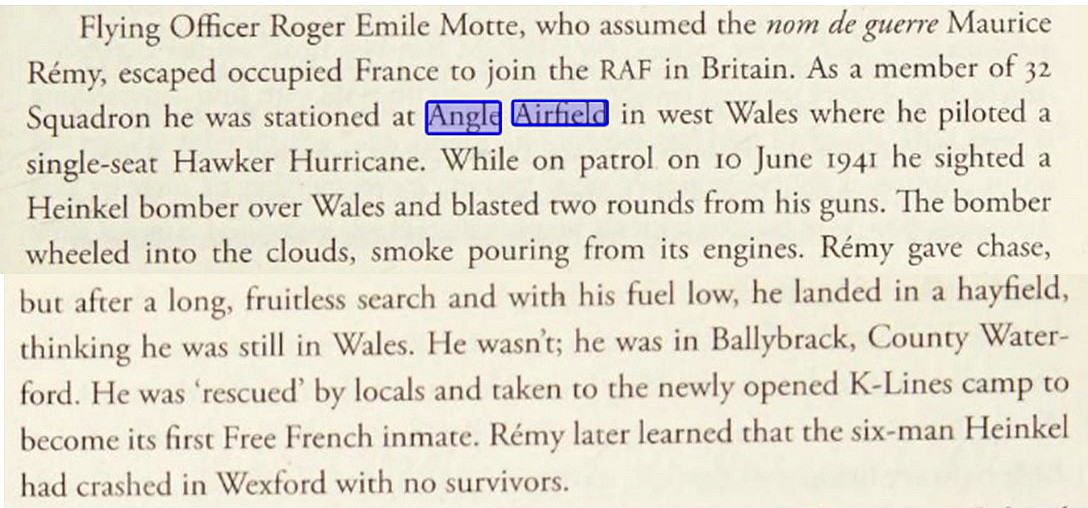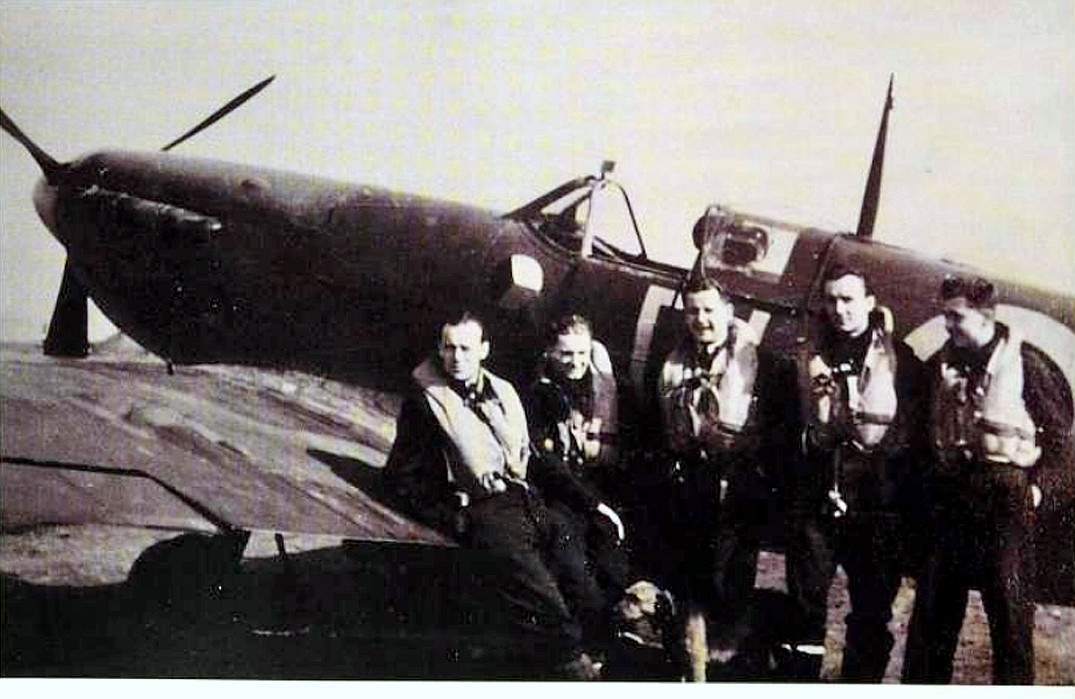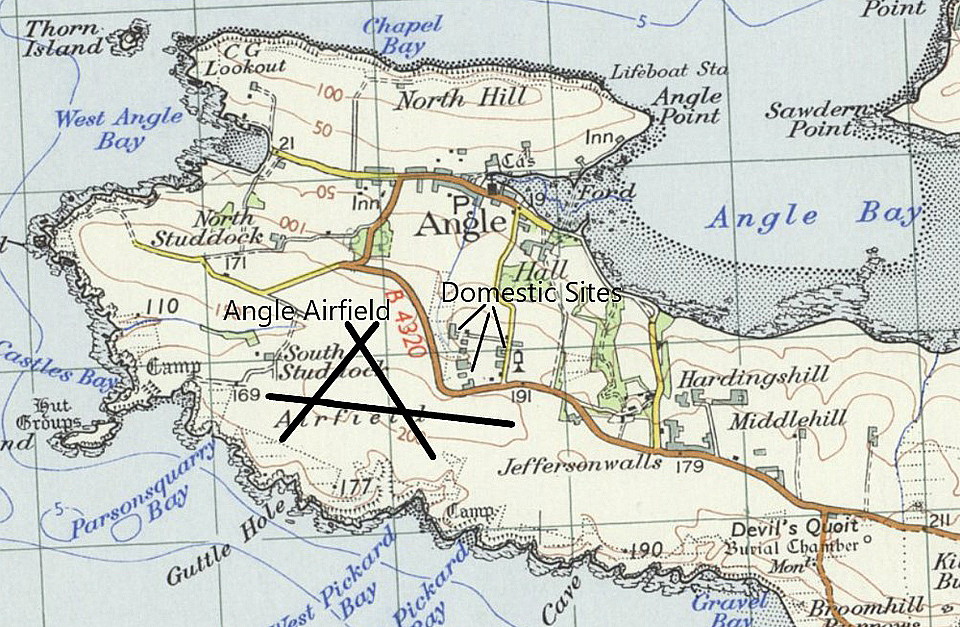Angle
ANGLE: Military aerodrome
Note: This picture (2013) was obtained from Google Earth ©
The outlines of the runways are still discernable.
Military user: RAF, later RNAS (Royal Navy Air Station), RAF Coastal Command 19 Group
No.32 & No.615 Sqdn (Hawker Hurricanes)
No.263 Sqdn (Westland Whirlwinds)
No.152 Sqdn, No. 312 Sqdn (Czech), No.412 Sqdn (RCAF) & 421Sqdn (All flying Spitfires)
May 1943 to September 1943: Royal Navy (HMS Goldcrest)
No. 794 Sqdn
Location: 8nm W of Pembroke
Period of operation: 1941 to 1945 (Other sources 1941 to early 1950s)
Runways: 11/29 1463x46 hard 05/23 914x46 hard
16/34 1097x46 hard
NOTES: In WW2 the runway surfaces were listed as tarmac with rubber chippings.
A MOST EXTRAORDINARY HAPPENING
Note: I was sent this second picture, with no attribution. If anybody can kindly remedy this, I will be very happy to amend the record.
Perhaps the most extraordinary thing to occur at ANGLE was when flying boat history was made when a Short Sunderland flying-boat based at PEMBROKE DOCK landed here! I think it’s best to quote the episode as recounted by John Evans in his lovely captioned photographic record book of PEMBROKE DOCK entitled ‘Flying Boat Haven’.
“Flying boat history was made on 29th May, 1943, when Sunderland Mark II, T9114, made a successful landing at ANGLE aerodrome, the RAF station a few miles to the west of PEMBROKE DOCK, (my capitals of course for locations). At the controls was Flying Officer Gordon Singleton of No.461 Squadron, Royal Australian Air Force. Singleton and his crew had made a daring air-sea rescue in the Atlantic when they landed on the open sea to pick up survivors of a ditched Sunderland. Hours later, after transferring the survivors and some of his crew to a French destroyer, (which had also towed the Sunderland in very heavy seas), the flying boat skipper was faced with either scuttling his aircraft or attempting to take off.
Choosing to try and get airborne, Singleton and his skeleton crew heaved sighs of relief as the Sunderland at last lifted off the water, only to discovcer that a huge hole had been smashed in the hull. A landing on water was out of the question, so the Australian signalled PEMBROKE DOCK that he was to attempt a landing on ANGLE aerodrome – something never before tried with a 27-ton flying-boat. In a masterful landing Singleton brought T9114 down on the grass parallel with the runway. The hull cut a giant furrow in the earth, the Sunderland tilted over onto it’s port side, the float crumpled and the historic landing was over”.
A half-hearted attempt was made to retrieve it, but along the way it decided to scrap it as the type was officially regarded as being obsolescent.
A MICHAEL T HOLDER GALLERY
Note: The third item is an excerpt from "Almost Into Wind" by Derek Senogles Rooke. The fourth item, from Google Street View, is of the gun emplacement mounted on a truncated windmill.
Note: This fifth item, from Google Street View, is of the threshold to runway 16. The sixth item is a an excerpt from Jammet's of Dublin, by Alison Maxwell and Shay Harpur. The seventh item is a photo of members of 'B' Flight, 312 'Czech' Squadron, posed against one of their Spitfire VB's in March 1942.
OTHER SEAPLANE LANDINGS ON GRASS
On another tack much lighter floatplane aircraft are regularly landed on grass perfectly safely; it is normal practise in Alaska for example as the winter season approaches, to convert seaplanes to wheel/ski operation. This has also been done in the UK but I won’t say by whom or where as I’m not at all certain the CAA would regard this as ‘normal’ practise and I could get somebody into trouble.
AN ASIDE
Harking back to the Short Sunderland it seems the floats mounted outboard were very weak and often caused major problems - so why didn’t Shorts address this obviously significant design “failure” early on? This example is a very common theme throughout British aviation history; the seeming inability of so many British aircraft designers/manufactures to produce a robust design suitable for the purpose intended. Preferring always to be far too clever it seems, but lacking in basic intelligent decision making. The Americans on the other hand prefer a “blacksmith” approach to engineering, happily accepting a given higher fatality rate as part of the equation for both civil and military aircraft, and endlessly producing world beating designs. Hmmmmm?
DR Preece
This comment was written on: 2021-01-25 11:21:47I am trying to find a site to fly my electric radio controlled aircraft, I have all the relevant registrations and insurances. Is there any part of the airfield I could use?? I am currently building a Westland Whirlwind that was operational at Angle. Hopeing to hear from you soon
We'd love to hear from you, so please scroll down to leave a comment!
Leave a comment ...
Copyright (c) UK Airfield Guide















